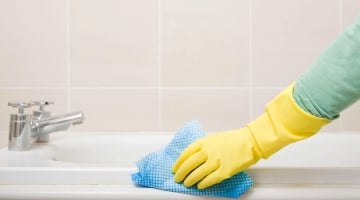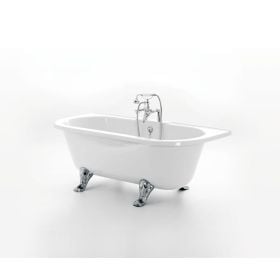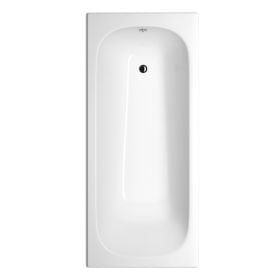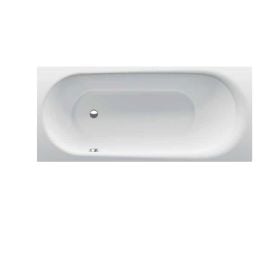
Cleaning a steel bath isn’t that much of a big job. We all agree that no one likes a dirty bathtub and no one likes to clean it either. You're at the right place if you find yourself among those who think it is not easy to clean a bathtub. We have researched and made this "How to clean a steel bath" guide for you, so you'll see how easy it is to clean a bathtub completely. You can clean a steel bath in various ways, including buying professional cleaning solutions, but you can easily tackle dirt and grime with DIY cleansers made from ingredients found in your home. Vinegar is an excellent example since it quickly removes soap scum and limescale. Homemade bathroom cleaning supplies are less expensive and more environmentally friendly than harsh store-bought cleaning agents. You will also minimise the chance of damaging the surface of your bath by choosing natural alternatives.
Cleaning a Bath

Make your own steel bath cleaning solution by combining equal parts white wine vinegar and water in a disposable container. Simply spray onto the surface of your bath and wipe away the dirt. Allow the solution to sit for 15 minutes before wiping it away with a soft towel for deeper cleaning.
- Another economical approach to cleaning a bath is using bicarbonate of soda. It's great for unclogging the drain, removing odours, and eliminating soap muck accumulated around the bath taps.
- Sprinkle some baking soda in the steel bath and spray the vinegar and water solution on stubborn stains and grime. Allow the mixture to bubble for a few minutes before cleaning it with a sponge to make a paste. Allow the paste to sit for 15 minutes before wiping it away and rinsing it clean.
- Soak paper towels in white vinegar to deal with hard water stains and apply them to the affected area. Allow for 1-2 hours before scrubbing with a baking soda and vinegar mixture and rinsing clean.
- Rinsing your bath after each use has to be one of the most effective methods to keep it clean. Rinsing the bath removes any residual soap and bathing chemicals that may have left a residue on the surface.
- Simply clean off the bath with a quick spray of vinegar with a sponge and soft towel to clear soapy residue and prevent mineral deposits from accumulating. A thorough wipe-down after each usage will help prevent a ring from forming around the bath. These black rings are commonly left after using oily bath products and can be difficult to remove if left for an extended period of time.
Getting Rid of Mould and Mildew
A bathroom is an ideal place for mould and mildew to develop. Therefore, it's essential to ventilate the space and allow fresh air to flow. If you find mould or mildew forming, you should address it right away. Mould commonly develops in the grout and sealant around the bath. The best way to get rid of mould is to use bleach and scrape with a toothbrush. You can also form a paste of bicarbonate of soda and water, apply it to the area affected, and then scrub it away after 15 minutes.
Cleaning a Bath Drain
Removing grime and hair from the steel bath drain ensures that water drains rapidly. Pour half a cup of bicarbonate of soda down the plughole, followed by an equal amount of white vinegar, to clear the drain and pipes. This solution will bubble up in the plug and dissolve obstructions. Finally, pour boiling water down the drain to clean it out.
Cleaning Bath Taps
Bath taps of high quality are built to last for many years, but they must be cleaned regularly to stay shining. Avoid using aggressive chemicals that could harm the surface when cleaning your bath taps. Lemon juice is excellent for removing limescale and water deposit buildup and creating a bright shine.
Things to have in mind when cleaning a bath
- Avoid using steel wool, abrasive brushes, and scouring powders when cleaning your bath, as these can harm the surface.
- Cleaning products should never be mixed. Certain chemical mixtures, such as chlorine, bleach, and ammonia, might produce harmful fumes and even burn your skin.
- When working with chemicals, ensure the environment is adequately ventilated and use rubber gloves to protect your hands.
- To avoid any residue in the bath, wipe and rinse away cleaning materials.
Conclusion
Cleaning your steel bath doesn't have to be a hassle if you rinse and wipe away any soapy residue after each use. Cleaning regularly keeps grime and mould away and keeps your steel bath looking new. Banyo has put together this guide, to help you develop a habit of cleaning your bathtub after every use.








